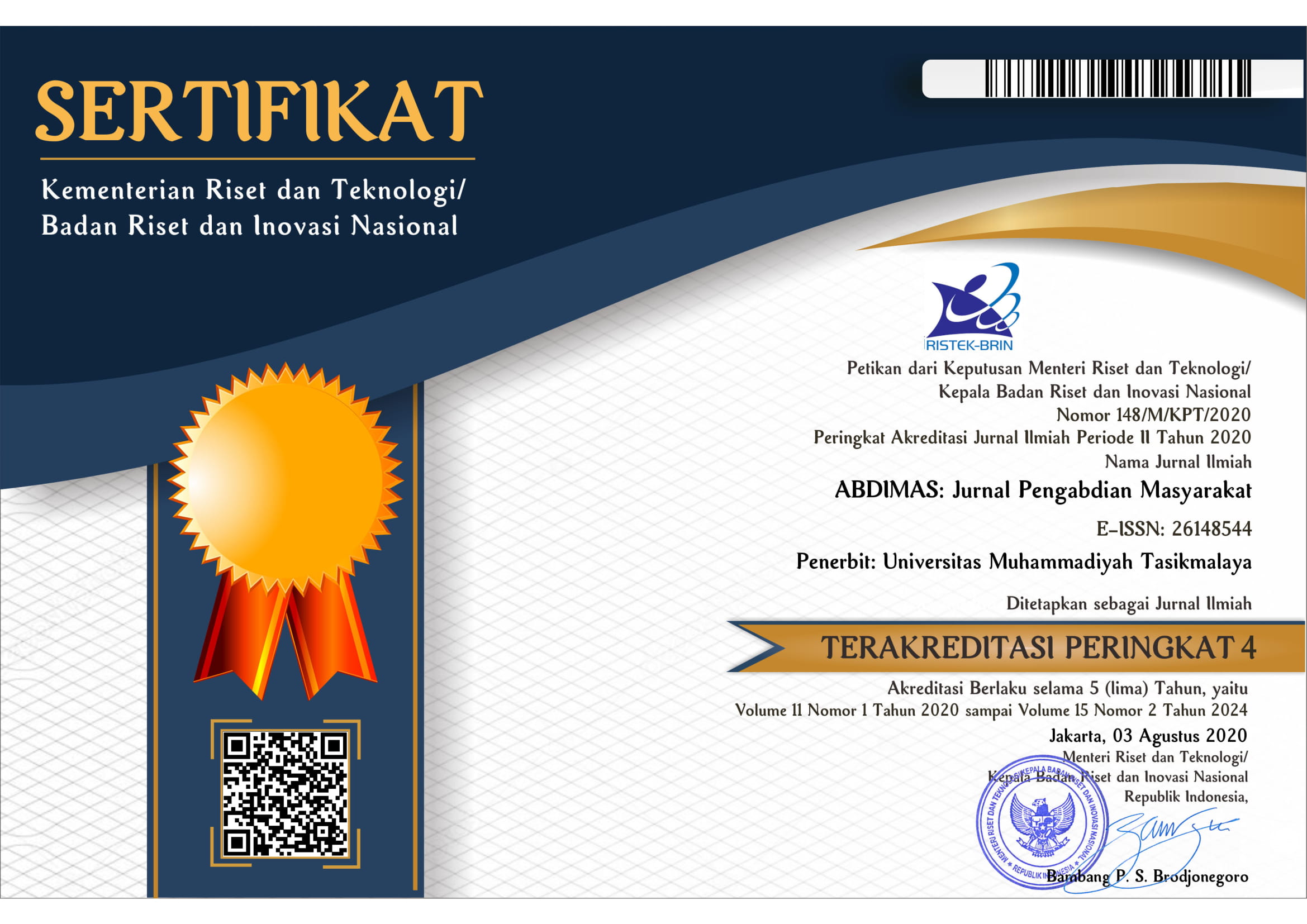A Small Effort for Future Bonus Demography: Growing the Dream of Orphanage Children
DOI:
https://doi.org/10.35568/abdimas.v7i3.4859Keywords:
Orphanage children, Panti asuhan, GRIT, Motivation, Dream, Future success, Kindness, OptimismAbstract
Indonesia is going to face bonus demography within 2030–2040. The productive people within those years will have the highest percentage of the population. Bonus demography will benefit the country if the young generation grows up with high motivation to create positive impacts. As the Indonesian Gini ratio (reflecting income inequality) is quite high, many orphanage houses exist to help the poor and yatim children live and grow as well as other normal families. A lot of social organizations build and operate orphanage houses, a place to fulfill physical needs and education. Nevertheless, society needs to support orphanage children to grow and reach their dreams. This community development is aimed at delivering motivation to orphanage children to be optimists and raise their dreams. This project was done at Panti Asuhan Rumah Berkat, Cikarang, and organized for delivering the material. The main purpose of the material is to raise hope to realize a future dream by taking small steps (studying) and moving consistently. This activity is written with the hope that there will be many duplications as the number of orphanage houses in Indonesia is numerous.
Downloads
References
Abimanyu, A. (2023). Bonus Demografi Indonesia 2045. Kompas.Com. https://money.kompas.com/read/2023/07/10/103212026/bonus-demografi-indonesia-2045?debug=1&lgn_method=google&google_btn=onetap
Ajisuksmo, C. R. P., Prabawanti, B. E., Susilandari, C. A., & Heni, A. H. (2022). Pemberdayaan Perempuan Melalui Kerajinan Tangan Dan Teknologi Digital Untuk Memasarkan Produk Serta Mengelola Keuangan. Abdimas Dewantara, 5(2), 211–223. https://jurnal.ustjogja.ac.id/index.php/abdimasdewantara/article/view/9122
Chen, H., & Volpe, R. P. (1998). An analysis of personal financial literacy among college students. Financial Services Review, 7(2), 107–128. https://doi.org/10.1016/S1057-0810(99)80006-7
Clark, R., Lusardi, A., & Mitchell, O. S. (2016). Employee Financial Literacy and Retirement Plan Behavior: a Case Study. Economic Inquiry, 55(1), 248–259. https://doi.org/10.1111/ecin.12389
Cole, S., Sampson, T., & Zia, B. (2009). Financial Literacy , Financial Decisions , and the Demand for Financial Services : Evidence from India and Indonesia Financial Literacy , Financial Decisions , and the Demand for Financial Services : Evidence from India and Indonesia.
Febriyanti, E., Nasution, H. N., & Utami, R. Y. (2022). Endeavors to foster Healthy Adolescent Free from Anemia : from Nutritional Perspective. Abdimas Um, 5(1), 1–6.
Hadiana, O., Heriana, T., Nur, H. A., & Ahmad, R. (2023). Empowerment Public Based Nationality : Strengthening Indonesian National Values in Coastal Communities in Malaysia. Abdimas Umtas: Jurnal Pengabdian Kepada Masyarakat, 6(4), 4303–4313.
Indrashwara, D. C., Remses, R. D. J. J., & Tapa, I. G. F. S. (2023). Operating Cost Efficiency to Increasing Net Profit of F & B Department at Hotel Indigo Bali Seminyak Beach. Abdimas Umtas: Jurnal Pengabdian Kepada Masyarakat, 6(4), 4418–4423.
Kawitri, A. Z., Rahmawati, B. D., Arruum, R., & Rahmatika, R. (2019). Self-Compassion dan Resiliensi pada Remaja Panti Asuhan Self-Compassion and Resilience among Adolescents Living at Social Shelters. Jurnal Psikogenesis, 7(1), 76–83.
Kusumaningsih, R. (2024). Family Development to Create Family Resilience Rila Kusumaningsih. Abdimas Umtas: Jurnal Pengabdian Kepada Masyarakat, 7(1), 67–74.
Mazaya, K. N., & Supradewi, R. (2011). Konsep Diri dan Kebermaknaan Hidup pada Remaja di Panti Asuhan. Proyeksi, 6(2), 103–112.
Putri, A. N. (2020). Economic Empowerment Through Verticulture Method Cultivation in ‘ Aisyiyah Girls Orphanage Pekanbaru. Abdimas Umtas: Jurnal Pengabdian Kepada Masyarakat, 5(1), 1–3.
Rahmah, L., Indah, N., Sari, P., & Iskandar, R. Y. (2018). Healthy Food Counseling with Media Posters and Fun Cooking at The Pondok Harapan Surabaya Orphanage. Abdimas Umtas, 6(3).
Siswantini, T., Ayunita Ajengtyas Saputri, Rahmasari Fahria, & HS, S. (2023). Financial Management Education in Traditional Cake Entrepreneurship Under The Share of The Diamond Cooperative in Pisangan Village, South Tangerang. ABDIMAS: Jurnal Pengabdian Masyarakat, 6(4), 4229–4245. https://doi.org/10.35568/abdimas.v6i4.3469
Vinson, J. M., McMillan, J. J., & Schleifer, L. F. (2022). An investigation of the association of grit with performance in accounting courses. Journal of Accounting Education, 59, 100779. https://doi.org/10.1016/j.jaccedu.2022.100779
Worldpopulationreview.com. (2022). Country Ranking Gini Coefficient. https://worldpopulationreview.com/country-rankings/gini-coefficient-by-country














